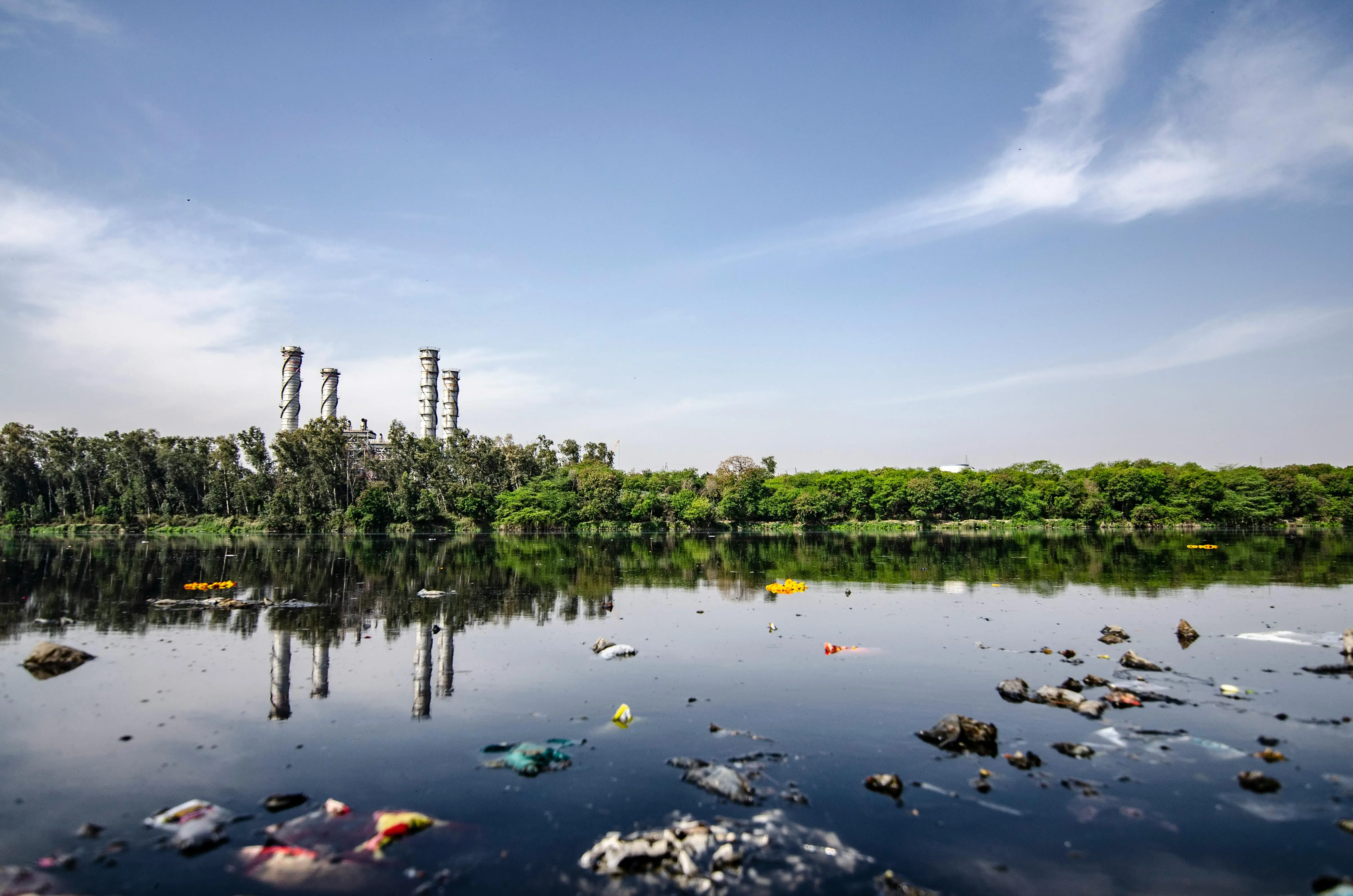Carpenter Technology Corporation is a steel company dealing with the development, manufacturing, and distribution of corrosion-resistant alloys and stainless steel. As per Carpenter Technology Corporation. (2021), the facility is located in Philadelphia city in Pennsylvania State in the United States. The corporation primarily deals with the fabrication, manufacturing, and distribution of steel products, including metal alloys, titanium, and stainless steel. Furthermore, the organization conducts metal alloying elements, leading to the production of various finished products, including bars, billet, rods, and diverse, unique shapes. On the same note, Carpenter Technology Corporation manufactures a variety of engineering products comprising metal injected molded designs and ceramics for various uses in different companies. The compound of the company consists of various block warehouses which houses production and offices. Waste management requires effort for individual employees leading to the formation of organizational culture as current companies significantly concentrate on environmental conservation practices (Carpenter Technology Corporation, 2021). According to Carpenter Technology Corporation (2021), the company possesses 4,600 employees. They would engage in waste management plans directly and indirectly through decision-making and control of various parameters during the productions process.
Waste Streams
| Waste | Volume (Kg/tone crude steel) | Current Handling Practice |
| Blast furnace slag | 250.8 | Re-use |
| Coke oven gas | 12.7 | Reduction |
| Coke oven sludge | 15.4 | Recycling |
| Blast furnace gas | 124.6 | Reduction |
| Desulphurization slag | 18.5 | Recycling |
| Oxygen converter gas | 15.9 | Reduction |
| Rubbish | 86.9 | Reduction |
| Mill scale | 26.0 | Re-use |
| Liquid wastes | 10.8 | Recycling |
| Dust | 12.7 | Reduction |
Manufacturing of steel leads to the production of various types of waste products as experienced at the Carpenter Technology Corporation, including slag, sludge’ gases, and dust, to name a few. Equally, the company produces liquid and gaseous wastes such as oil, effluent, grease, flue gases, and fume extraction that negatively impact impacts if inappropriately handled (Sarkar, 2015). Moreover, the nature of the waste products has broad classification into two categories, such as process waste and non-process ones. Furthermore, Carpenter Technology Corporation is committed to carrying out business in an environmentally responsible structure while considering required regulations and laws regarding the environment and safety (Branca et al., 2020). As a result, the company has constant improvement in environmental management through reducing, reusing, recycling various waste materials produced by the company (Branca et al., 2020). Furthermore, the practices aimed to reduce negative environmental impacts on the surroundings and preserve natural resources lead to remaining competitive in the industry. Besides, the organization operates by focusing on protecting the land, air, and water for the coming generation and maintaining the community’s safety (Sarkar, 2015). Equally, the company conducts its activities on the site while concentrating on the environmental protection that could improve the health of the customers, employees, and community members through adhering to required standards as mandated by diverse government agencies.
Year 1
| Waste | Volume (Kg/tone crude steel) | Year 1 target | |
| Blast furnace slag | 200 | 40.7% | Re-useRe-use and recycling |
| Coke oven gas | 9.65 | 65.9% | Reduction and elimination |
| Coke oven sludge | 11.2 | 54.1% | Recycling |
| Blast furnace gas | 97.6 | 38.5% | Reduction and elimination |
| Desulphurization slag | 18.5 | 62.6% | Recycling and re-use |
| Oxygen converter gas | 8.3 | 70.4% | Reduction and elimination |
| Rubbish | 54.6 | 36.1% | Reduction |
| Mill scale | 19.0 | 54.8% | Re-use |
| Liquid wastes | 7.3 | 46.8% | Re-useRe-use, recycling, and reduction |
| Dust | 9.6 | 39.7% | Reduction |
Year 2
| Waste | Volume (Kg/tone crude steel) | Year 1 target | |
| Blast furnace slag | 120.4 | 66.5% | Re-useRe-use and recycling |
| Coke oven gas | 6.4 | 77.3% | Reduction and elimination |
| Coke oven sludge | 8.9 | 68.6% | Recycling |
| Blast furnace gas | 72.3 | 71.8% | Reduction and elimination |
| Desulphurization slag | 11.8 | 76.2% | Recycling and re-use |
| Oxygen converter gas | 6.5 | 79.4% | Reduction and elimination |
| Rubbish | 43.9 | 58.6% | Reduction |
| Mill scale | 15.6 | 69.3% | Re-use |
| Liquid wastes | 5.2 | 70.8% | Re-useRe-use, recycling, and reduction |
| Dust | 6.0 | 57.1% | Reduction |
Year 3
| Waste | Volume (Kg/tone crude steel) | Year 1 target | |
| Blast furnace slag | 87.5 | 79.5% | Re-useRe-use and recycling |
| Coke oven gas | 4.2 | 85.7% | Reduction and elimination |
| Coke oven sludge | 5.3 | 76.6% | Recycling |
| Blast furnace gas | 52.7 | 82.8% | Reduction and elimination |
| Desulphurization slag | 8.7 | 86.0% | Recycling and re-use |
| Oxygen converter gas | 4.9 | 89.3% | Reduction and elimination |
| Rubbish | 30.6 | 72.8% | Reduction |
| Mill scale | 12.4 | 78.5% | Re-useRe-use |
| Liquid wastes | 4.2 | 80.8% | Re-useRe-use, recycling, and reduction |
| Dust | 5.1 | 68.7% | Reduction |
Communication Plan
Communication exits as the critical factor in introducing and implementing the waste management plan due to offering essential information to various stakeholders. According to Samáková et al. (2017), transparent and constant communication leads to the practical and successful implementation of the programs by management and the workforce. Communicating the programs would involve conference meetings in various departments, inter-departmental meetings, and notice. As a result, communication aims at explaining the multiple benefits of the plan regarding environmental conservation (Samáková et al., 2017). The program focuses on reducing the number of waste products produced by the company in the next three years as required by the set standards from relevant institutions and agencies. Notably, the plans focus on engaging in various activities and practices such as recycling, elimination, reduction, and reuse for effective management of the company wastes. Furthermore, the plan addresses various issues which focus on waste management, starting from production to distribution.
Steel production in the company involves different actions that require employees and management to work as a team to achieve the corporation’s environmental sustainability goals. The organization has experienced diverse issues such as facilitating the contamination of the groundwater from the company affluent, making the EPA notice to the firm to conduct cleanup actions (Carpenter Technology Corporation, 2021). As a result, the plan aims at preventing such instances through sufficient mechanisms of managing the wastes. Every company in steel and other industries concentrates on sustainability programs that improved the environment contributing to the provision of safety surrounding employees and communities. Such benefits lead to increasing competition value and reputations. Besides, the plan emphasizes accomplishing various goals whose primary aim being reducing the percentages of multiple wastes produced by the company. The three-year plan explains the expected reduction volume and rates each year until the achievement of the target objectives. Employees and management having multiple questions access the program implementing team through emails and during conference meetings.
Training Programs
Due to many employees in the company, training would occur at the departmental and section level. Each section of productions and sections would have specific dates of training on employees various factors. The training aims at educating eth employees on identification and separation of wastes including process and non-process, solid, liquid, and gaseous leading to understanding handling procedures to prevent release into the environment. Understanding the types of wastes would significantly contribute to effective reduction mechanisms by the employees working in different departments and production sections. Besides, training would focus on labeling various types of wastes in different areas of production, including production floor, raw materials reception, and at the chimneys and handling procedures. Nevertheless, indicating recycled and re-use waste products exist as a fundamental element of training. Some of the gaseous waste is not recycled and re-used; instead, the company focuses on incorporating modern reduction and elimination techniques.
Regular Reviews
Adequate understanding of the plan progress, which focuses on regular reviews using different strategies to ensure that programs run as plans and realize some positive changes. For example, achievement of various percentages would occur semi-annually and annually. For example, a reduction in the amount of wastes produced annually would indicate an improvement in waste management. Furthermore, regular reviews would involve getting feedback from employees in a different department to understand drawbacks and strengths, leading to making suitable adjustments.
References
Branca, T. A., Colla, V., Algermissen, D., Granbom, H., Martini, U., Morillon, A., Pietruck, R., & Rosendahl, S. (2020). Re-useRe-use and recycling of by-products in the steel sector: Recent achievements paving the way to circular economy and industrial symbiosis in Europe. Metals, 10(3), 345. https://doi.org/10.3390/met10030345
Carpenter Technology Corporation. (2021, April 4). Environmental. Carpenter Technology. https://ir.carpentertechnology.com/environmental
Samáková, J., Babčanová, D., Hrablikchovanová, H., Mesárošová, J., & Šujanová, J. (2017). Using the communication methods, tools, and support during management of project communication in industrial manufacturing enterprises. Research Papers Faculty of Materials Science and Technology Slovak University of Technology, 25(41), 51-62. https://doi.org/10.1515/rput-2017-0021
Sarkar, S. (2015). Solid waste management in steel industry—Challenges and opportunities. International Journal of Nuclear Energy Science and Technology, 9(3), 884-887. https://www.researchgate.net/publication/275653959_Solid_waste_management_in_steel_industry-challanges_and_opportunity









